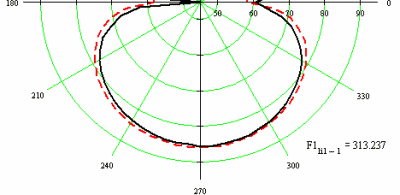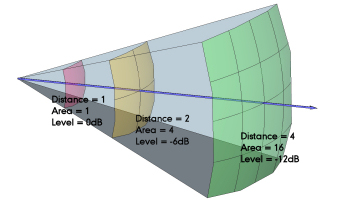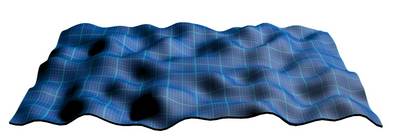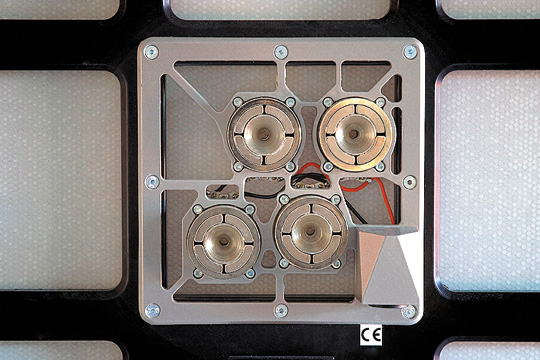The Simeon Omnipanel is a Distributed Mode Loudspeaker (DML), a flat-panel technology using transducers developed by UK innovator NXT. The Omnipanel uses four NXT transducers in place of the electromagnetic coils of conventional piston-type speaker drivers. Sound is propagated over the entire active surface area of the Omnipanel, some 2,775 cm² (430 inches²). This contrasts with the 172 cm² (26.60 inches²) surface area of a typical 4-inch conventional cone speaker, which propagates sound as a point-source. The acoustic properties of the Omnipanel make it an ideal solution for large-area soundfield amplification. The slim panel speaker weighs only 2.5kg and can be mounted unobtrusively on a wall or used on a portable tripod stand.
omnidirectional dispersion

The dispersal of a Distributed Mode Loudspeaker (black) is compared against a conventional point-source speaker (red), through a frequency sweep. The horizontal polar plot illustrates the much wider distribution pattern of the Distributed Mode Loudspeaker, especially for the higher frequencies.
The result is a much more uniform soundfield than is achievable with a conventional speaker, speech intelligibility is enhanced and the speaker location within the listening area becomes much less critical.
sustained sound pressure level over distance

Sound pressure level (SPL) from a conventional point-source loudspeaker falls off dramatically as the listener moves away from the speaker, following the ‘inverse square law’.
With a Distributed Mode Loudspeaker, sound is propagated over the entire surface area, and the fall-off in SPL over distance is less marked. This means that the Omnipanel speaker has a longer ‘throw’ than a conventional point-source cone speaker with equivalent SPL at the speaker surface.
acoustic propagation

Sound is generated over a Distributed Mode Loudspeaker speaker surface in a dynamic, quasi-random pattern. This results in a diffuse, less correlated signal that is less susceptible to the effects of room-response and reverberation.
Taken together, the propagation, dispersion, and throw of an Omnipanel speaker make it more efficient and less susceptible to feedback than a conventional point-source speaker array.

